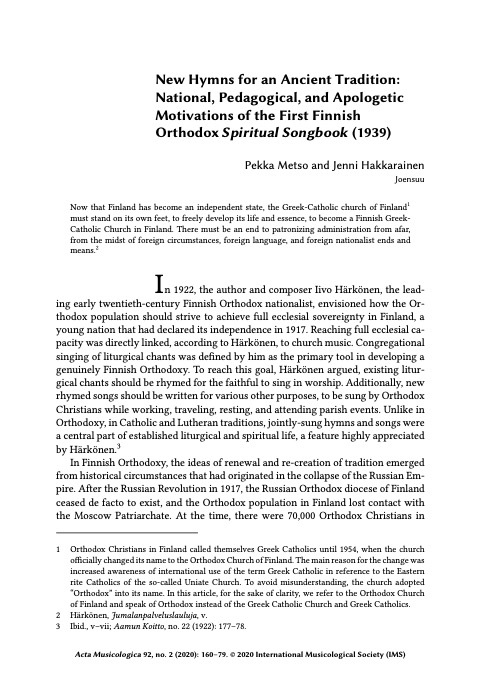Abstract
This article focuses on the history of the Greek-Catholic Spiritual Songbook (1939), the first Finnish Orthodox Christian hymnal to include paraliturgical songs. It aims to retrace the process of creating the book, the people involved with it, and the motivations for initiating the project, and provides knowledge on a previously uncharted chapter in the history of Finnish Orthodox church music in the 1920s and 1930s. The promotion of new spiritual songs and congregational singing suited the needs of the Orthodox Church in Finland, a newly independent church established in 1923. New songs were seen as a suitable tool to substantiate Finnish national sentiments of the Orthodox population, as opposed to the Russian mentality. The songs also had an educational purpose: to strengthen the appreciation and knowledge of Orthodoxy among Orthodox believers. As such, the songs had an apologetic function to combat increased Lutheran influence in the Finnish Orthodox Church. Two separate yet interwoven songbook projects were launched in 1929. As the outcome of the projects, the Spiritual Songbook differed significantly from the plans of the main organizers. However, it provided the church with a useful and long-awaited aid for promoting congregational singing in parish life and in schools.
